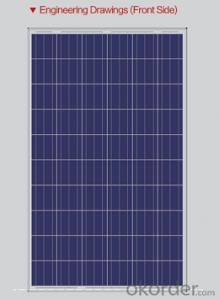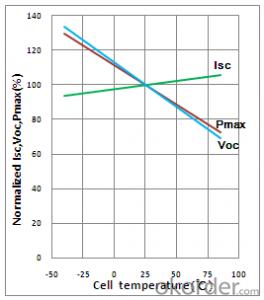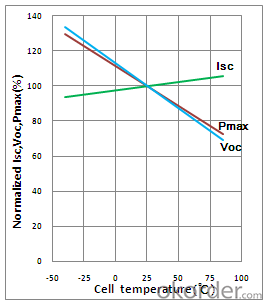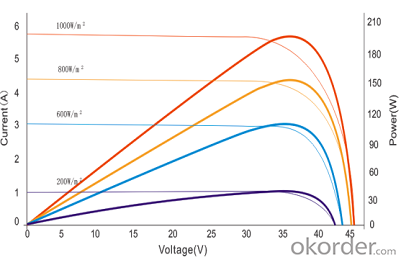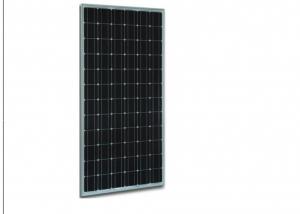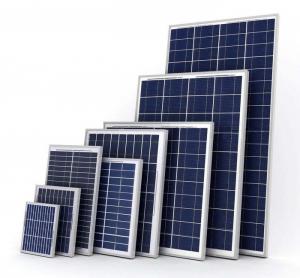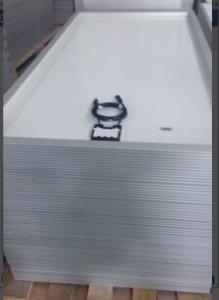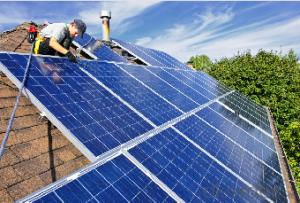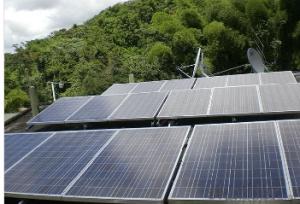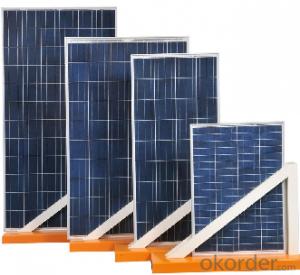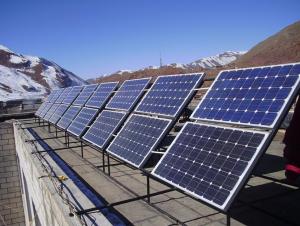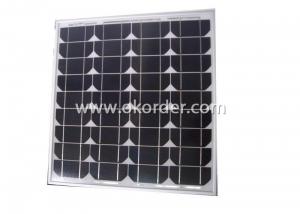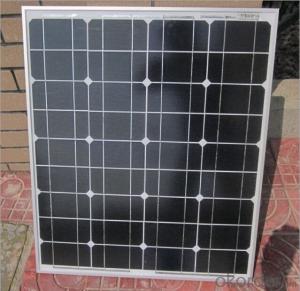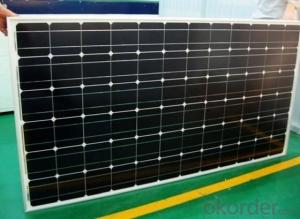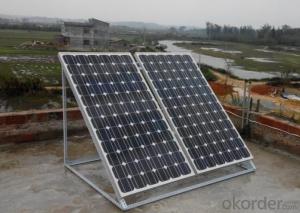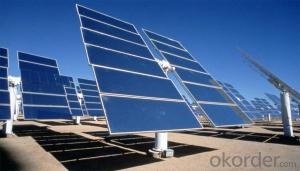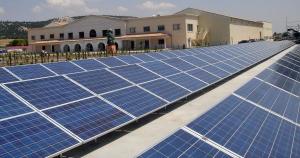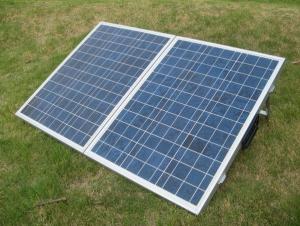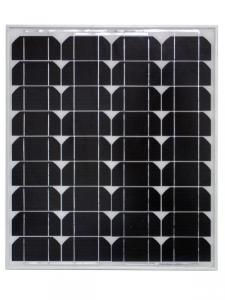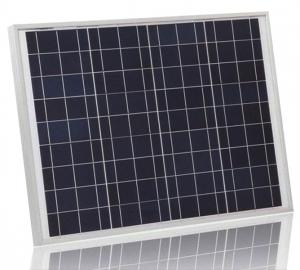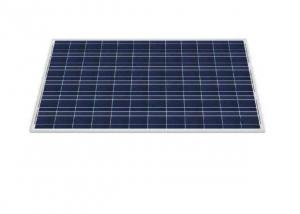Epic Solar Panels - Latest High Efficiency Monocrystalline Silicon Solar Panels
- Loading Port:
- Tianjin
- Payment Terms:
- TT OR LC
- Min Order Qty:
- 500 pc
- Supply Capability:
- 10000 pc/month
OKorder Service Pledge
OKorder Financial Service
You Might Also Like
Specification
CNBM Solar is a world-leading and Vertical integrated manufacturer of high-performance with Silicon,
Wafer, Cells, Modules, which convert sunlight into electricity for residential, commercial, and utility-scale
power generation.
The capacity of CNBMSolar is reach to 1GW, and make sure each year our shipment capacity is more
Than 700-800MWs, at the same time, we have set up the largest solar power station with our partner
in Ukraine.
CNBM is a Quality + Service oriented company with“Excellence at Each Step” approach, composed of
the finest components from TUV and IEC-certified partners around the world, CNBM modules consistently
undergo a variety of trials at the company’s Test & Development Centre, ensuring peak performance
capabilities. The company is committed to develop and provide the world with clean and renewable energy
to ease the energy shortages as well as human kind’s impact on the environment.

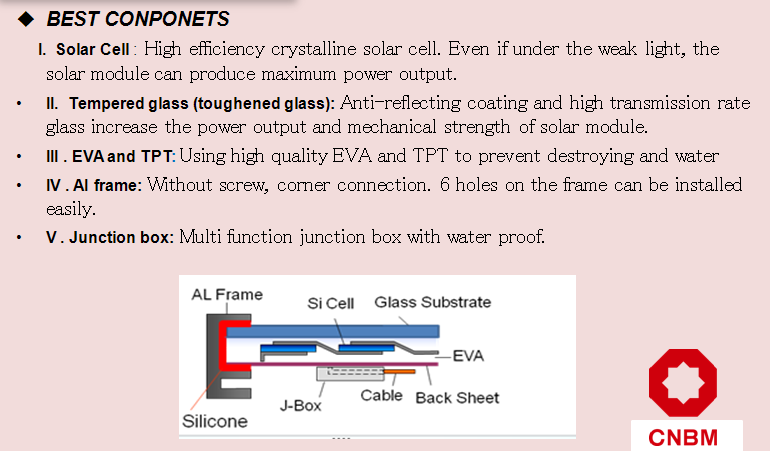
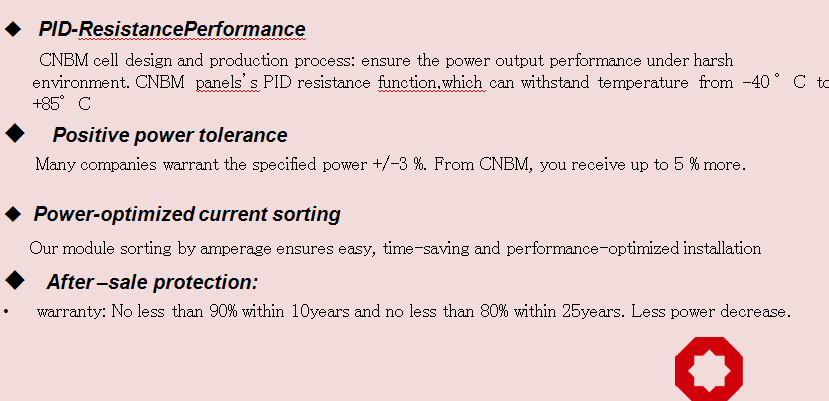

- Q: Where can I find good instructions to build a cheap solar panel on my own?
- Building solar panels is not really a do it yourself kind of job. They are made in high tech factorys with specialized equipment and experianced engineers. It would probably be cheaper and easier to just buy some panels rather than try to make your own.
- Q: Hi. I have been looking into getting solar panals but I only want them for one room. See, we're expanding the house by adding a basement, the basement isn't going to be that big but we wanted to have solar energy for the basement only. Could anyone give me a rough estimate on the cost of solar panals for my basement?
- Only after you give an estimate of the power consumption you will have in the basement. Obviously you do not have a clue about solar panels or their usage. Suggest you find a book and start reading.
- Q: Rated in kilowatts, what is the maximum output of one 8 by 0 solar panel? Assume this solar panel is located at the equator for maximum sunlight.
- The amount of power and how long a solar panel last depends on the quality of the components and how the solar panel is built. Why have a small vision of solar energy, like charging a battery. There are resourses that can show you how to build quality long lasting panels that could save you up to 75% on your home power bill. Start adding that up. Yea, it is a whole lot of money
- Q: What is the cost of installing solar panels?
- The cost of installing solar panels can vary depending on various factors such as the size of the installation, location, type of panels, and additional equipment needed. On average, a residential solar panel system can cost anywhere between $10,000 to $30,000 or more. However, it's important to note that there may be potential tax incentives, rebates, and financing options available, which can help offset the upfront costs and make solar panel installations more affordable.
- Q: so...do you think an online store dedicated to selling solar panels/systems will be a good business idea? Since green energy is the 'hottest' growing business area recently with usage growing about 30% per annum and investors putting all their money into solar energy, wind farms, biofuel, etc. I think when you sell solar systems online this will be the most appealing business model to the end customer...especially if you offer free installation on orders of say $000.
- It's that offering installation that is the problem. Do you have the ability to arrange contractors to install where ever the customer may be? The online store model works best on a drop ship model where once you've shipped the parcel, you're done. Online selling of solar panels would be basically to the DIY crowd and as you've said, most people don't have the skills nor the enthusiasm to install them. The current price per watt installed is about $0 a watt. $ per watt are the organic dye and film solar panels which are horrendously inefficient and require much more square footage and that $ per watt price is before installation. Currently solar depends a lot on government subsidies to be worthwhile. The various green energy technologies (both solar and wind) lack the economics to be anything other than greenwashing and often if you consider the total impact to the environment, they are often worse than fossil fuels and even if the environmental impact of their manufacture is neglected, it's hard to compete with fossil fuels where nature has done all the work of storing solar energy in a convenient hydrocarbon form. Of course, there's still money to be made off people's ignorance. You've already asked this question several times, apparently you're not satisfied with any answers that are counter to your hopes. Why don't you try it and see how far you'll get.
- Q: DIY, buying solar panels, room is barely 200 sq. ft. have a 5000 btu air conditioner, how many watts do I need, thinking of buying 75 watt solar panels, have space on the roof.
- Build okorder /
- Q: I want to get definate instructions on how to make the components and convert my home to solar energy. I know I could hire some one to do this, but frankly I do not have the funds at my disposal to do it. I thought if I could find detailed instuctions I could slowly do it myself (with my husband's help). I have looked into loans for this purpose to no avail. Finding the information on the net could take forever! If anyone knows a site that would give me the information or even a hint on how to start? Any help will be appreciated, but if you have any good links to good information please share them with me..Thanks
- I doubt that you are going to want to learn how to dope your own silicon wafers, add contacts and laminate them into PV panels.? I also doubt that you're going to even want the various chemicals to make e.g. cadmium-based cells anywhere near your house (cadmium is a very toxic metal).? In other words, making your own solar panels is not an at-home project. You can buy solar panels based on cells of several different types.? A link to a Pricewatch-like website for current prices on solar panels is below.? Mounting panels to roofs or pole mounts, running conduit and wires, and installing battery banks and inverters are within the capabilities of skilled laypeople. More data at the links. Edit:? I am reporting all of Agua-Luna's cut-and-paste pieces as spam.? I encourage others to do likewise.
- Q: Can solar panels be damaged by hail?
- Yes, solar panels can be damaged by hail. Hailstones, especially larger ones, can cause cracks or dents in the glass surface of solar panels, which may impair their efficiency and performance. It is important to note that the severity of the damage will depend on the size and speed of the hailstones, as well as the quality and durability of the solar panel materials.
- Q: Can solar panels be used to power a water pump?
- Yes, solar panels can be used to power a water pump. Solar panels generate electricity from sunlight, which can be used to power various devices and appliances, including water pumps. This allows for a sustainable and environmentally friendly way of pumping water, especially in remote or off-grid locations where access to electricity may be limited.
- Q: i just took a trip to florida, they are cutting down anything that doesnt float and putting up buildings. Most of these cost a bundle, bill gates may pay cash for them, but most people will have many payments. Since pools, satellite dishes, and docks if near the water seem to be standard issue, why not a couple solar panels and water heater. It is florida after all, and if you are allready paying a half million or so for a house, what is another 0k gonna mean to you. Why dont they make it mandatory to include these on all new housing and condos and businesses. With that many the price would come down quickly and pay for itself long before the house is payed off and/or florida is flooded due to global warming.
- Solar Panels in housing developments is not being used because it would add $25,000 to $40,000 to the price of the home. Most people in the USA don't understand that after a few years the solar electric panels will start paying them back. It is not just the upfront cost. People would rather spend that 40K on somthing smart like a new corvette. Which has no pay back at all then something stupid like solar electric and helping themselfs or the rest of the world. So if the builders were to add them to the house people would just buy from another builder and the one adding the solar roof tops would just go broke. The State would have to find a way to credit the buyer or buider enough to make it worth it. Is it not more fun to spend millions on finding out where Anna Smith is going to be barried? Or maybe billions on top of billions on War? If we had spend the money on solar that we have spend on Iraq alone we could have put solar on every roof top in the whole USA and had few billion left over. Think about it.. 200 million people in the USA with three to a home would be 66 million homes. It would have only cost 528 billions dollars to put a kWh Solar Electric system on each house in America. But that would be stupid. War makes more money. We don't want Exxon to go broke do we?
Send your message to us
Epic Solar Panels - Latest High Efficiency Monocrystalline Silicon Solar Panels
- Loading Port:
- Tianjin
- Payment Terms:
- TT OR LC
- Min Order Qty:
- 500 pc
- Supply Capability:
- 10000 pc/month
OKorder Service Pledge
OKorder Financial Service
Similar products
Hot products
Hot Searches
Related keywords
